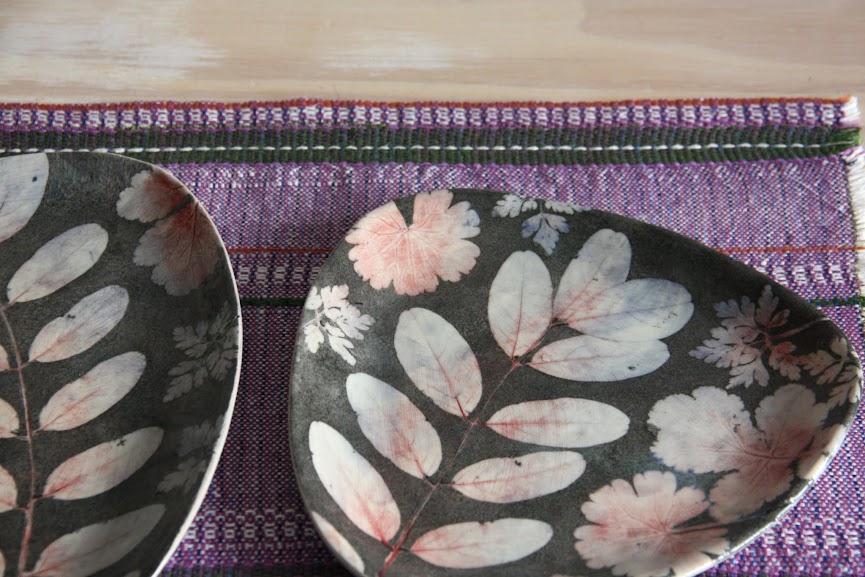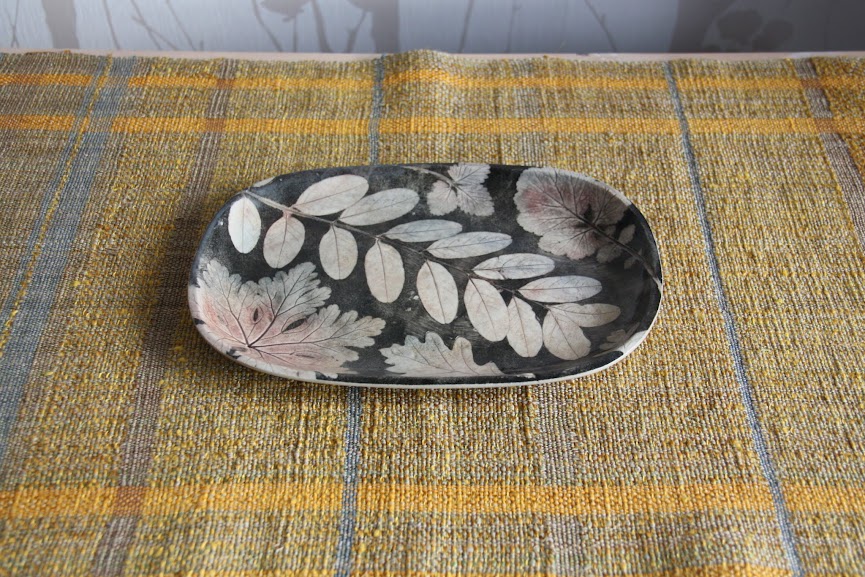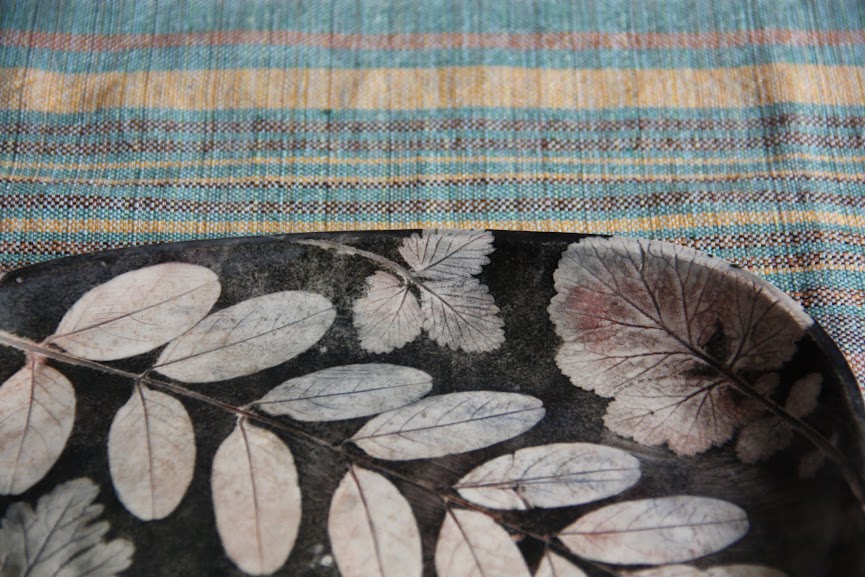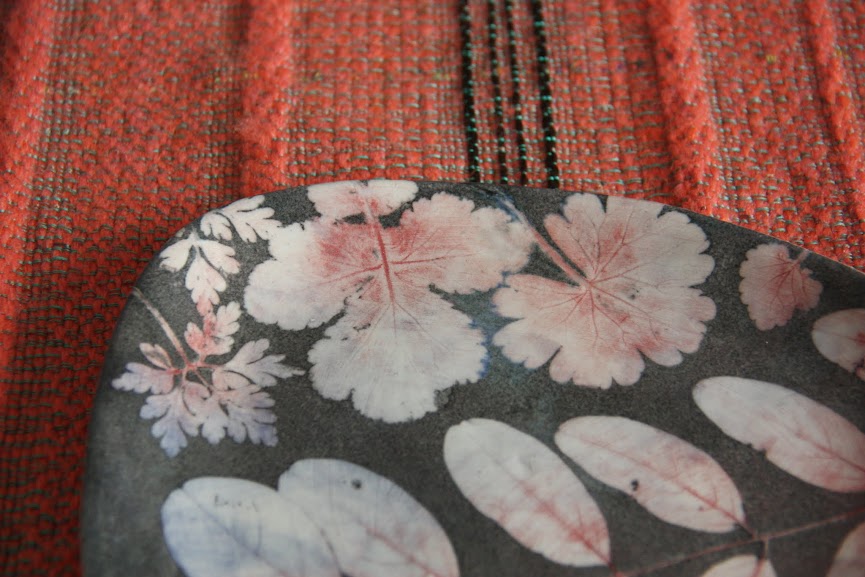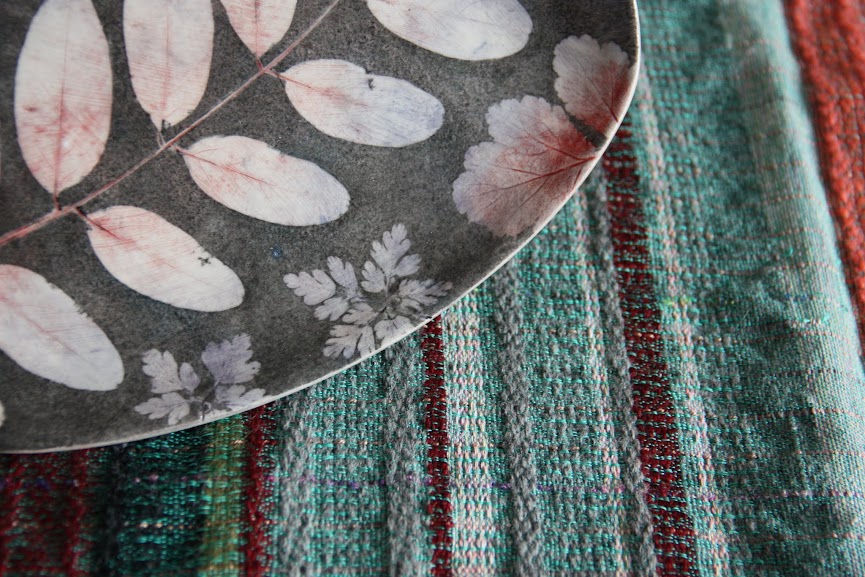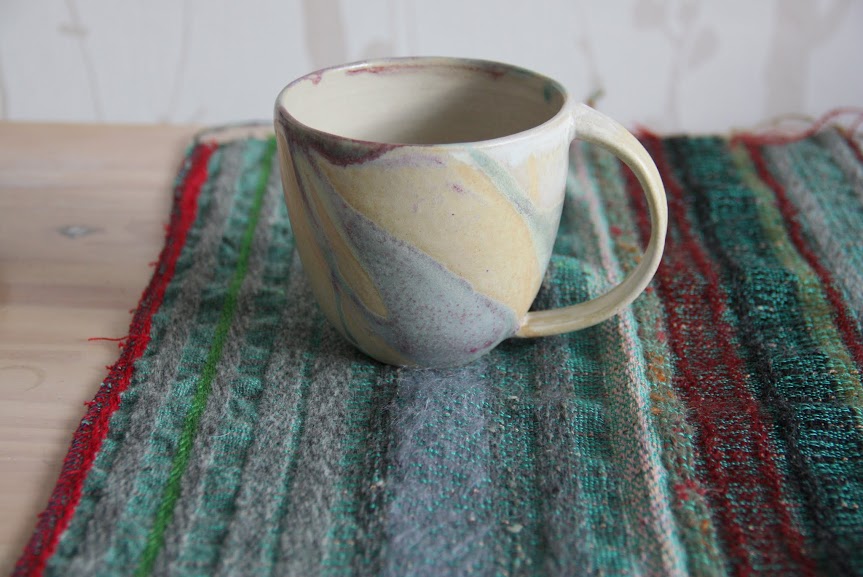Sewing leather clothes is not much different from sewing fabric, just have to be careful when cutting pieces, the sewing is done with a special foot, teflon or circular, and there's no ironing a seam flat, you open it with a hammer, yes, a hammer. But making bags is another matter altogether.
A big thanks to
Ayako, who makes
lovely colourful bags and totes, for showing me the tricks of this trade and letting me experience bag-making in her atelier near Paris.
Here are some photos of her working on a new collection of bags.
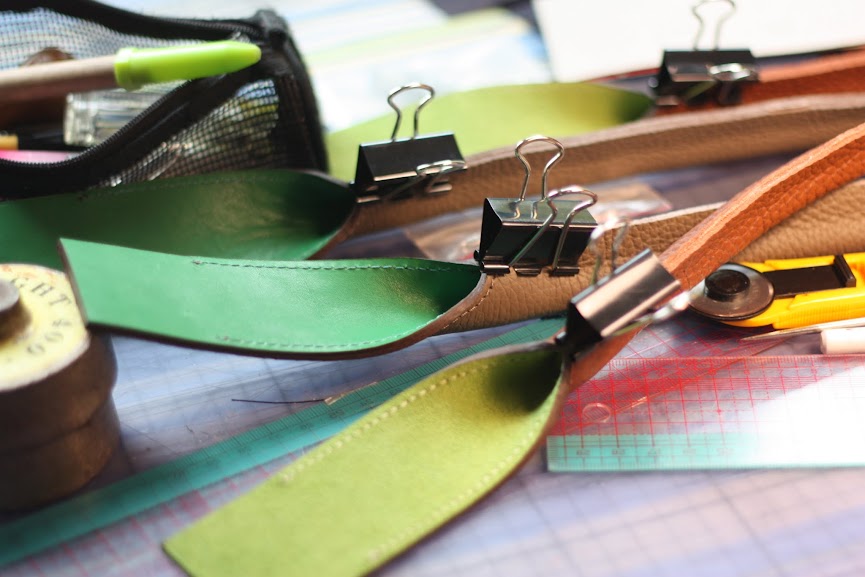
In this "sandwich", there are actually 3 different layers, the outside grainy leather, the colorful lining and between the two a reinforcement that prevents the handle from stretching. In french it's called salepas, or synderme, it is made from reconstituted leather.
All the parts that are subject to tension, such as handles, straps, bottoms and places where handles are stitched on the bag body, are reinforced with this material. Whereas cheap bags are interlined with fabric and sometimes even cardboard (!!)
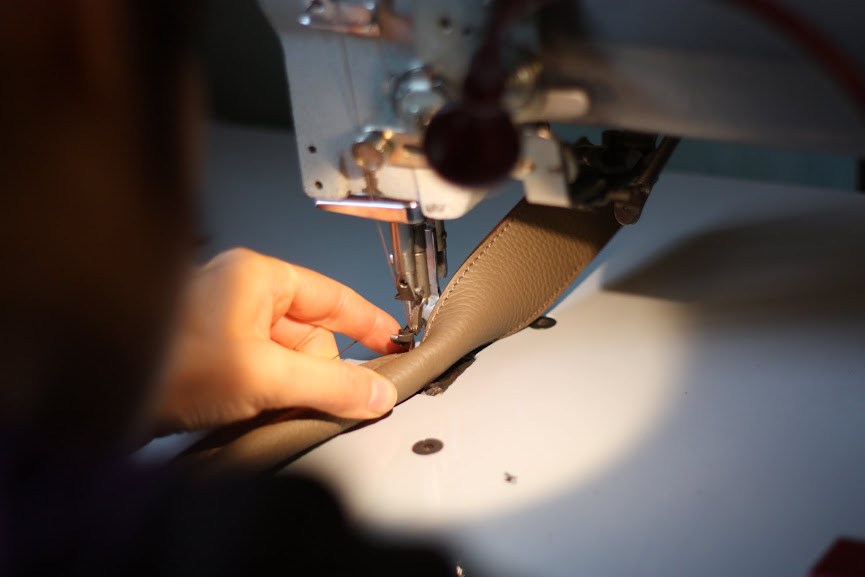
Then the handle is top-stitched lenghwise, and the extra seam allowance is cut off.

The edge is painted, here with tinted wax.
And heated, so that the wax melts and you can't distinguish one layer from another. This operation can be repeated till perfection. The edge should be smooth and even. Personally, I prefer transparent wax, it gives a natural, raw finish.
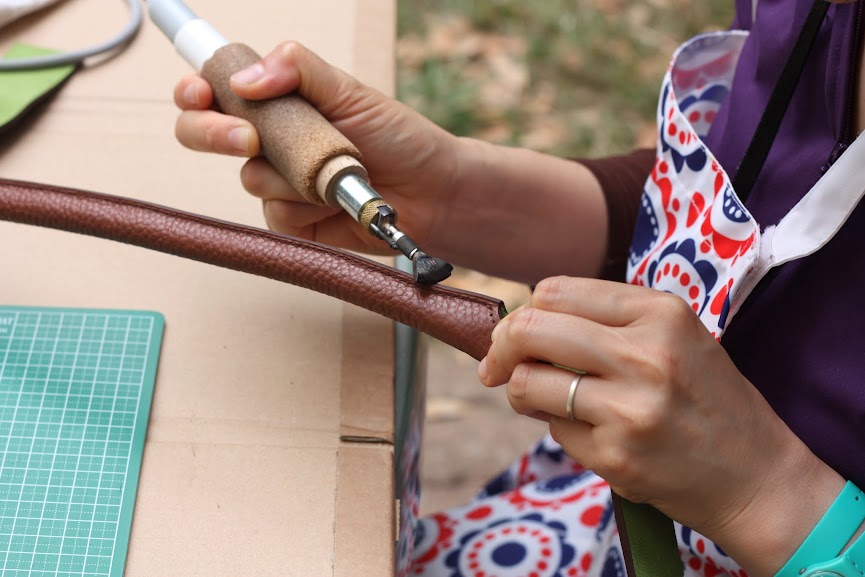
Bag making involves a lot of glue. And since you cannot use pins - double sided scotch tape.

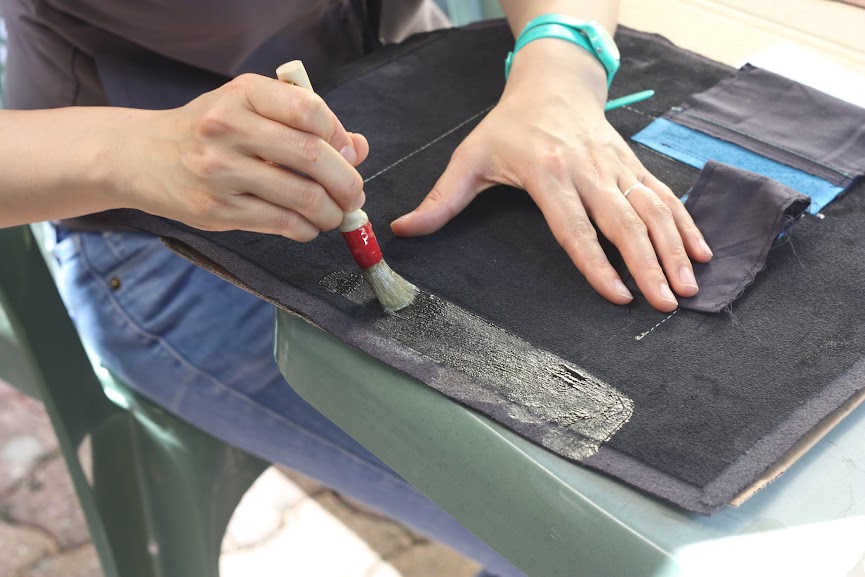
This glue is spread evenly on both parts of the "sandwich", left to dry a few minutes, and pressed tightly together.
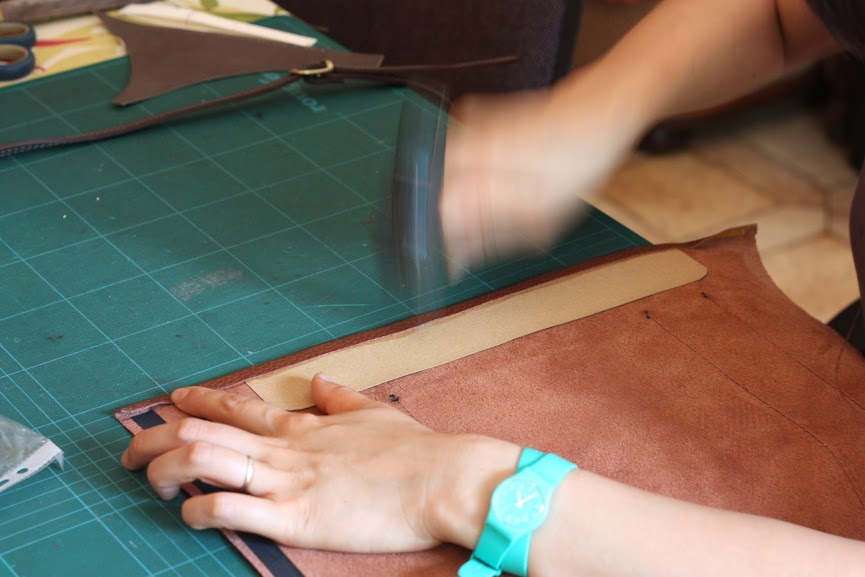
Here you can see a piece of salepas reinforcement where the handles will be attached later, and the upper edge is folded over and hammered to stay flat. Notice how long it is, so that the top of the bag won't cave in.

This pocket lining is attached with double sided tape.
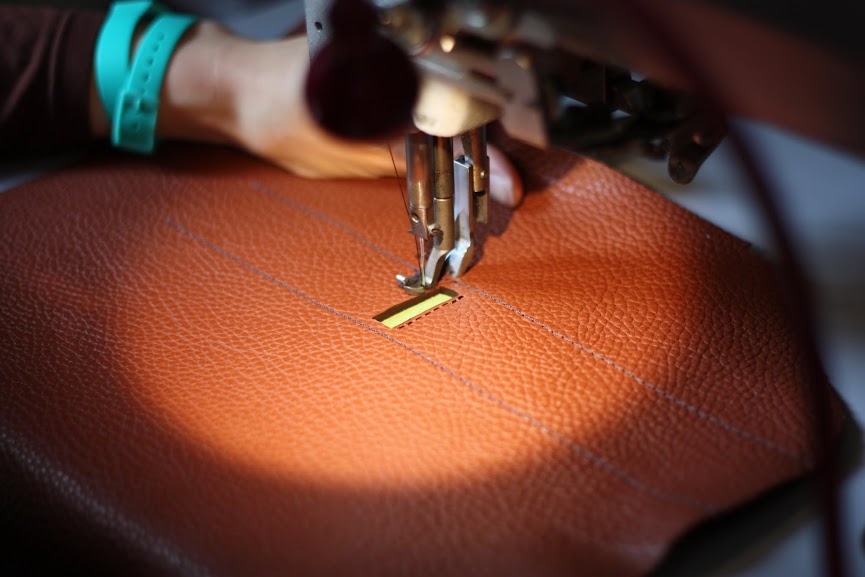
And top-stitched.
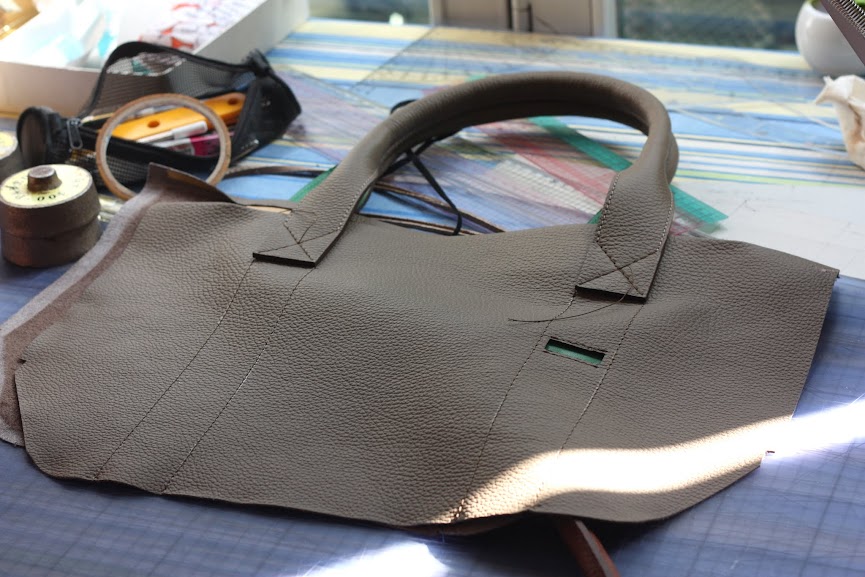
Just assembling together a bag takes 2-4 days. Combined with material price (30-80€/m²) this can easily lead to a bag costing your entire salary.


